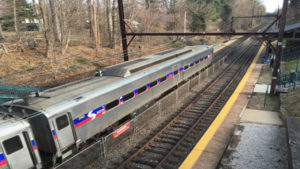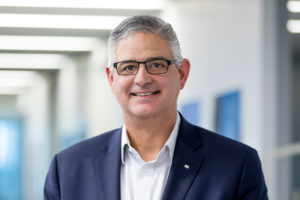MTA Chairman’s letter to NYC mayor urges increased capital support
Written by Jenifer Nunez, assistant editorMetropolitan Transportation Authority (MTA) Chairman and Chief Executive Officer Thomas Prendergast sent a letter July 28 to New York City Mayor Bill de Blasio asking for more capital support.
Predergast wrote, “yesterday, in announcing his plan for a new LaGuardia Airport, Gov. [Andrew] Cuomo publicly accepted the MTA’s request for the state to fund $8.3 billion for the Capital Program to be paid for through the state budget process over the next five years. He also voiced his support for what could be, with my requested $3.2 billion from the city, the largest Capital Program ever approved for the maintenance, improvement and expansion of the vital MTA system.
“Given the state’s clear commitment and the need for the MTA to meet unprecedented challenges, we urge the city to stand up for our customers and your constituents by committing to provide $3.2 billion in support for the Capital Program. We believe our proposal is fair and appropriate.”
MTA’s assets total $1 trillion, with 80 percent dedicated to New York City Transit. Prendergast notes these NYCT assets include some of those most expensive to maintain, including tunnels, 468 stations and more than 700 miles of track providing both local and express service for the same fare.
“New York City residents receive direct benefits from the MTA that other counties in the service district do not, including MTA para-transit services, student fares and senior fare discounts—and not without significant cost to the MTA,” he wrote. “The city subsidizes $129 million of the cost of para-transit services, leaving the MTA to cover the remaining $270 million deficit. The city’s reimbursement of the discounted school fare program is $45 million, a small fraction of the $240 million total annual cost of that service. (The State and MTA pick up the remaining $195 million.) The city’s subsidy of the half-fare that the MTA provides to the city’s seniors has remained flat at $13.8 million since 1978, leaving the MTA to fund the remaining $95 million.
“And, as the Independent Budget Office and Straphangers Campaign recently pointed out, the $325-million annual capital contribution we suggested the city should provide (in addition to the non-federal share of the costs of the Second Avenue Subway to East Harlem) would merely bring the city’s share to approximately what it would be had it kept pace with inflation for the past twenty years.”
Contrary to recent assertions, he wrote, the fares for the MTA’s commuter rail customers are not subsidized to a significantly greater degree than fares for services to NYC riders. This year, the MTA Farebox Recovery Ratio shows that fares cover 37 percent of the cost of a subway or bus ride compared to the 36 percent average recovery of a Metro-North Railroad or Long Island Rail Road fare.
The direct city aid to the MTA’s operating costs in 2015 is $1.88 billion, or 27 percent. State subsidies will total $4.73 billion or 69 percent he said.
“I have read that the city may pursue funding strategies that were not politically feasible in the past and are not likely politically feasible now,” Prendergast wrote. “Pursuing these strategies would likely cause further delay and leave the MTA exactly where we are today one year from now.
“I believe, Mayor, that both the city and the MTA share common goals. We want a public transit system that is safe and reliable; one that meets the daily needs of its millions of riders and one that is poised to meet future needs. We want a system that is affordable for its customers, recognizing the critical role that affordable transit plays in upward mobility; a system that fairly and equitably treats a diverse ridership throughout the region it serves. However, because every transit system depends on public subsidy, we want an MTA whose finances are stably grounded on subsidies that are fair to the city, state and customers. I believe all of these goals are reflected in our proposal and I look forward to a significant city commitment.”





